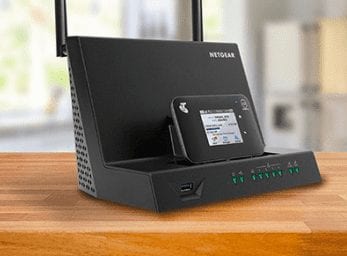With the advent of online educational courses, work-from-home, and remote working trends, there is a change in the home internet dynamics. More people realize the importance of strengthening their home network and optimizing connectivity—multiple devices and gadgets in a household and smart home automation result in investing in reliable home WiFi. To master home connectivity, there is a step-by-step guide for installing an ideal home WiFi connection. The article highlights the key stages in strengthening the home network and delivering secure, high-speed, and reliable internet connection.
Assessing the Home Network Hardware
When an internet user sets up a home WiFi network, he should consider hardware parts like:
- An access device, usually a modem
- A router for driving the traffic into and out of the network
- A switch for linking the wired client devices
- AP, or an access point for linking wireless client devices
Several internet service providers offer one CPE device to embrace network functionalities. Others provide one single access device without extra networking potential. It demands the users to establish their networks. An internet provider sets up a home network in different ways. Users need additional tools to access multiple devices depending on the services and complexity of their needs.
Wired Versus Wireless Devices
Experts believe that wired devices and gadgets perform better than wireless devices. The upside with wired devices is their lack of flexibility and higher expenses. Wireless devices have the ease of moving from one location to another. The performance quality might need to improve when accessing large files or engaging in video conferences. Wired devices include desktop PCs, media streaming devices, and smart TVs. They feature a connector that enables the home WiFi connection via Ethernet. Wireless devices include smartphones, tablets, notebooks, smart home devices, and streaming devices. Based on convenience and needs, most home networks have hybrid environments with a blend of wired and wireless devices.
Connecting Wired and Wireless Device Clients
Wired Client Devices
Linking wired client devices with a home WiFi network is straightforward. RJ-45 network cables plug the wired devices into the router, supporting Gigabit Ethernet. If the devices also support Gigabit Ethernet, users can experience optimized network speed between the devices and the router.
Wireless Client Devices
Users need a WiFi-enabled home network to connect wireless client devices. The home network should set a WPA2 (WiFi Protected Access 2) password to guarantee that others don’t access the connection and pose a security risk. There are different generations of WiFi available. It is best to install the latest version that the home router supports. It is necessary to ensure that the wireless devices have the same or similar versions to support the home WiFi.
Extending the Network Range
The CPE is usually set up in the main living area, away from the home office room. If a user intends to extend the home network range, the first step involves optimizing the CPE and APs for enhanced performance. The internet service provider should ensure an optimized CPE. Users can perform online speed tests and verify the performance between the home router and the internet service provider. The next step includes reaching distant areas at home with extra APS. In such a scenario, a wired Ethernet connection is a good idea. In addition, users can extend the Ethernet through a powerline adapter as well. The final alternative for extending the home WiFi signal is through a wireless mesh system.
Safeguarding the Home Network
Whether a user uses the provider’s router or buys a personal one, securing the home network is the priority. It means setting up a string password on devices and changing the default passwords on any gadget controlling or accessing the home network. Furthermore, the firewall should be active on the router to allow only specific traffic and filter out the remaining. The remote access to the cable router and modem should be disabled unless required.
Conclusion
When considering a home WiFi network, performance optimization is pivotal. The physical layouts of a home influence the performance of the network. For instance, glass, walls, and other interferences can hamper the performance of the WiFi network. To master seamless home connectivity, the users should follow the step-by-step guide and set up a WiFi connection.
Follow Technoroll for more!
Editorial Staff of the TechnoRoll, are a bunch of Tech Writers, who are writing on the trending topics related to technology news and gadgets reviews.




